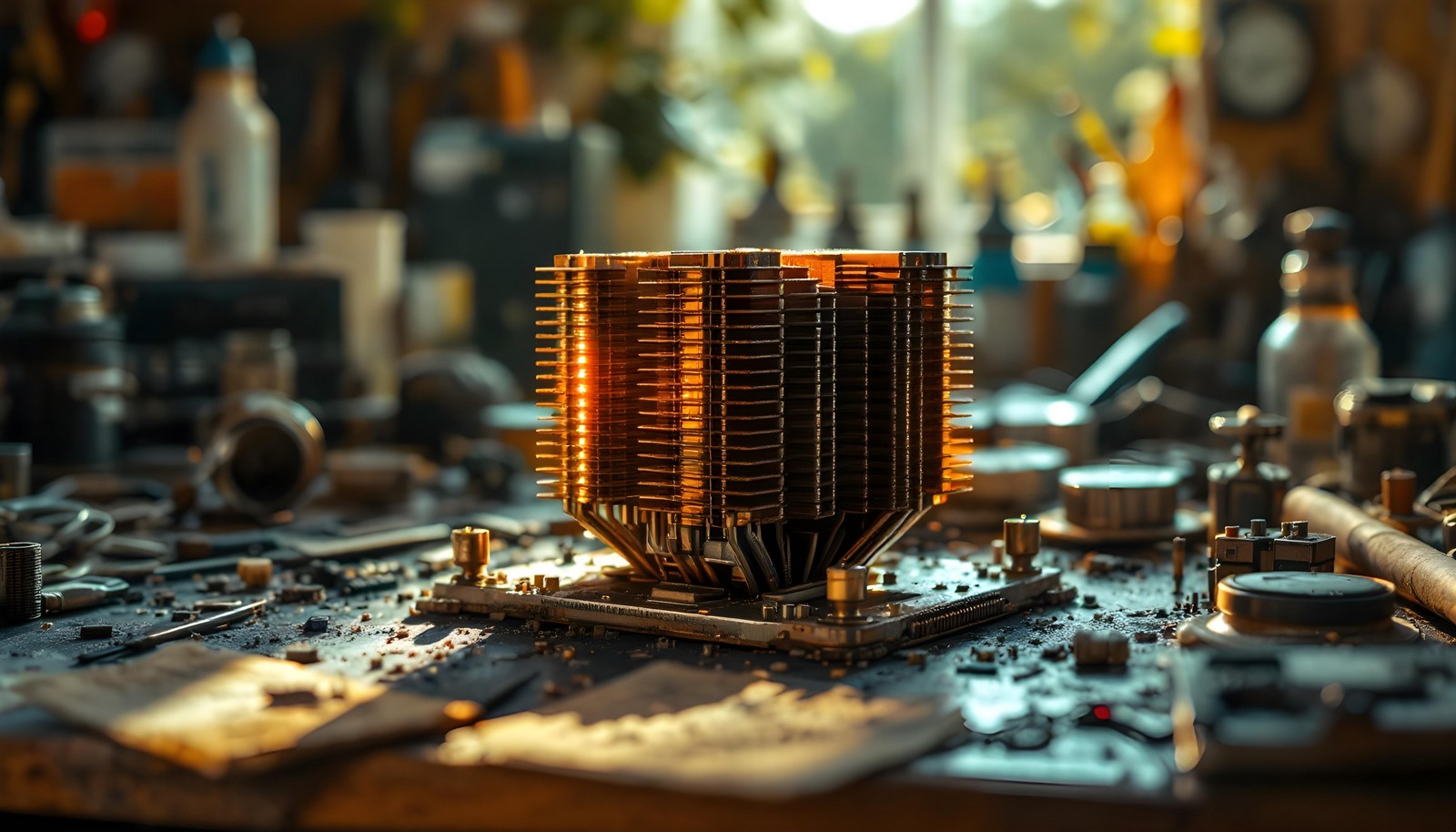CPU Heatsink

Quick Navigation:
- CPU Heatsink Definition
- CPU Heatsink Explained Easy
- CPU Heatsink Origin
- CPU Heatsink Etymology
- CPU Heatsink Usage Trends
- CPU Heatsink Usage
- CPU Heatsink Examples in Context
- CPU Heatsink FAQ
- CPU Heatsink Related Words
CPU Heatsink Definition
A CPU heatsink is a cooling device designed to dissipate heat from the central processing unit (CPU) of a computer. Made from thermally conductive materials like aluminum or copper, it works by transferring heat away from the CPU to ensure optimal operating temperatures. Modern heatsinks often use fins, heat pipes, and fans for enhanced cooling efficiency.
CPU Heatsink Explained Easy
Think of a CPU like a hardworking brain that gets really hot when it’s thinking a lot. A heatsink is like a fan that cools the brain down so it doesn’t overheat. It absorbs the heat and spreads it out so it can disappear into the air.
CPU Heatsink Origin
Heatsinks have been essential in computing since the advent of high-performance processors in the 1980s. The rise of faster CPUs demanded better cooling systems to ensure stability and prevent overheating.
CPU Heatsink Etymology
The term "heatsink" comes from its function—"sink" refers to absorbing and dispersing heat, just as a sink collects water.
CPU Heatsink Usage Trends
Over the years, CPU heatsinks have evolved with the increasing thermal output of processors. High-performance and gaming PCs often employ advanced cooling solutions like liquid-cooled heatsinks or hybrid systems, showing a shift toward more efficient and quieter designs.
CPU Heatsink Usage
- Formal/Technical Tagging:
- Thermal Management
- Computer Hardware
- Cooling Systems - Typical Collocations:
- "CPU heatsink installation"
- "aluminum heatsink"
- "air-cooled CPU heatsink"
- "thermal compound application"
CPU Heatsink Examples in Context
- "The technician recommended upgrading to a larger CPU heatsink for better cooling during gaming sessions."
- "Copper heatsinks are often used in high-performance systems due to their superior thermal conductivity."
- "Dust can accumulate on a CPU heatsink over time, reducing its efficiency."
CPU Heatsink FAQ
- What is a CPU heatsink?
A device designed to cool the CPU by dissipating heat into the surrounding air. - Why is a CPU heatsink important?
It prevents the CPU from overheating, ensuring stability and performance. - What materials are CPU heatsinks made of?
Typically aluminum or copper due to their excellent thermal conductivity. - How does a CPU heatsink work?
It absorbs heat from the CPU and releases it into the air, often aided by a fan. - What are heat pipes in a CPU heatsink?
Tubes that transfer heat efficiently from the base of the heatsink to its fins. - Can a CPU run without a heatsink?
No, as the CPU would quickly overheat and shut down or get damaged. - How do I maintain a CPU heatsink?
Clean it regularly to remove dust and ensure proper airflow. - What is the difference between air and liquid cooling?
Air cooling uses heatsinks and fans, while liquid cooling employs coolant-filled pipes for heat transfer. - How do I choose the right CPU heatsink?
Consider factors like thermal design power (TDP), size, and noise levels. - What is thermal paste, and why is it needed?
A substance applied between the CPU and heatsink to improve thermal conductivity.
CPU Heatsink Related Words
- Categories/Topics:
- Computer Cooling
- PC Building
- Hardware Maintenance
Did you know?
The world's largest heatsink, built for a supercomputer, weighed over 5,000 kilograms and used water cooling to handle the immense heat generated by thousands of CPUs working together.
PicDictionary.com is an online dictionary in pictures. If you have questions or suggestions, please reach out to us on WhatsApp or Twitter.Authors | Arjun Vishnu | @ArjunAndVishnu

I am Vishnu. I like AI, Linux, Single Board Computers, and Cloud Computing. I create the web & video content, and I also write for popular websites.
My younger brother, Arjun handles image & video editing. Together, we run a YouTube Channel that's focused on reviewing gadgets and explaining technology.



Comments powered by CComment